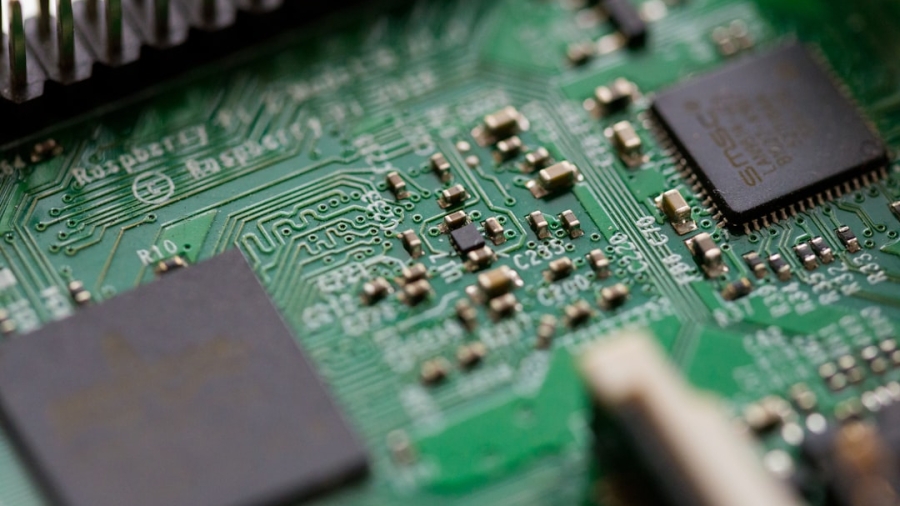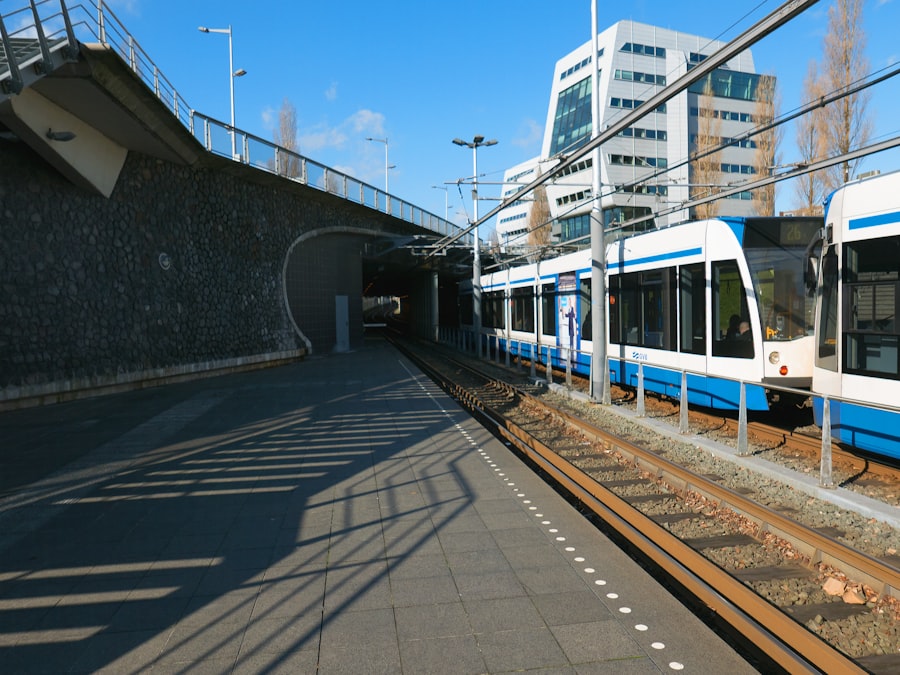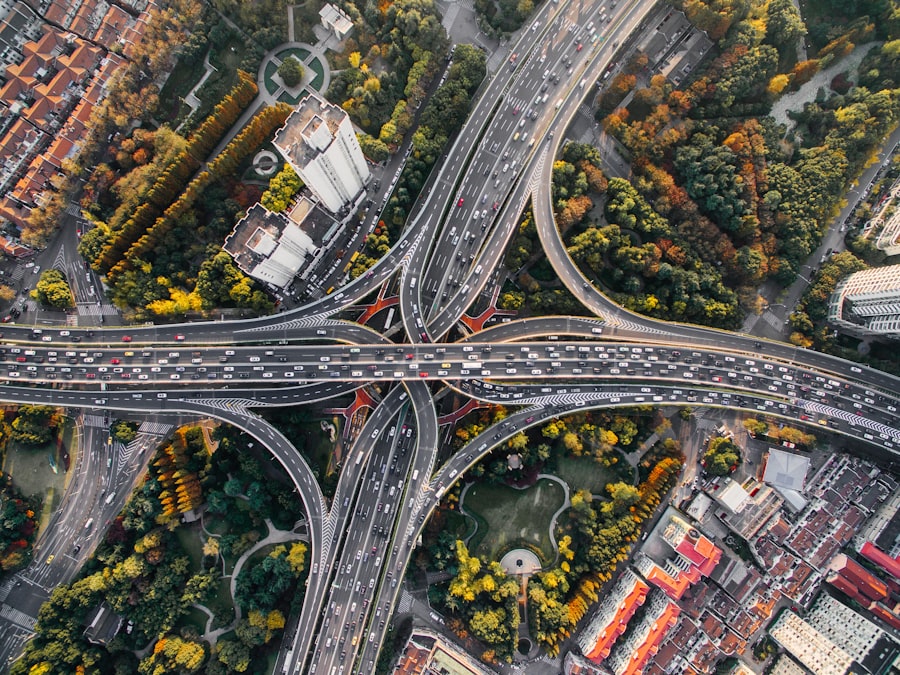The advent of 5G technology marks a significant leap forward in the realm of telecommunications, promising to revolutionize how we connect, communicate, and interact with the world around us. As the fifth generation of mobile networks, 5G is designed to deliver unprecedented speed, reduced latency, and enhanced connectivity compared to its predecessors. With download speeds that can reach up to 10 gigabits per second, 5G is not merely an incremental upgrade; it represents a paradigm shift that enables a plethora of new applications and services.
This technology is poised to support a vast array of devices, from smartphones to Internet of Things (IoT) devices, creating a seamless ecosystem where everything is interconnected. The implications of this connectivity extend far beyond personal convenience; they touch upon critical sectors such as healthcare, transportation, and urban planning. As cities around the globe grapple with the challenges of rapid urbanization and population growth, the integration of 5G technology into smart city initiatives emerges as a beacon of hope.
Smart cities leverage advanced technologies to enhance the quality of life for their residents while optimizing resource management and sustainability. The synergy between 5G and smart city infrastructure is particularly compelling, as it enables real-time data collection and analysis, facilitating informed decision-making and efficient service delivery. In this context, 5G serves as the backbone for a wide range of applications, from smart traffic management systems to intelligent energy grids.
As we delve deeper into the impact of 5G on smart city infrastructure, it becomes evident that this technology is not just a tool for improvement; it is a catalyst for transformation.
Key Takeaways
- 5G technology is the next generation of wireless communication, promising faster speeds, lower latency, and increased connectivity for smart city infrastructure.
- The impact of 5G on smart city infrastructure includes improved traffic management, enhanced public safety, and more efficient energy usage.
- Advantages of 5G for smart city applications include the ability to support a larger number of connected devices, enable real-time data analytics, and facilitate the development of innovative services and solutions.
- Challenges and considerations for implementing 5G in smart cities include the need for significant infrastructure upgrades, concerns about security and privacy, and potential digital divide issues.
- Case studies of 5G-enabled smart cities, such as Seoul and Barcelona, demonstrate the potential for transformative changes in areas like transportation, healthcare, and public services.
- The future of smart cities with 5G technology holds promise for even more advanced applications, such as autonomous vehicles, augmented reality, and remote healthcare services.
- In conclusion, the potential of 5G for transforming smart cities is significant, with the technology offering the opportunity to create more efficient, sustainable, and connected urban environments.
The Impact of 5G on Smart City Infrastructure
Enhanced Real-Time Data Transmission
With 5G’s low latency and high bandwidth, data can be transmitted almost instantaneously, allowing city officials to respond to issues in real-time. For instance, traffic lights can be adjusted dynamically based on current traffic conditions, reducing congestion and improving overall mobility within urban areas.
Advanced Applications for Public Safety and Emergency Response
The deployment of 5G technology facilitates the development of advanced applications that can enhance public safety and emergency response. For example, first responders can utilize high-definition video feeds from drones or body cameras in real-time during emergencies, allowing for better situational awareness and more effective decision-making. Additionally, smart surveillance systems powered by 5G can analyze video feeds using artificial intelligence to detect unusual activities or potential threats, thereby enhancing security in public spaces.
Informing Urban Planning Strategies with Real-Time Data Analytics
The implications of 5G technology extend beyond immediate safety concerns; they also encompass long-term urban planning strategies that can be informed by real-time data analytics. As cities evolve into smarter entities, the role of 5G as an enabler of these transformations cannot be overstated.
Advantages of 5G for Smart City Applications
The advantages of 5G technology for smart city applications are manifold, offering a range of benefits that can significantly enhance urban living. One of the most notable advantages is the increased speed and reliability of data transmission. With 5G networks capable of delivering data at lightning-fast speeds, city planners and administrators can access real-time information that informs their decisions.
This immediacy allows for more agile responses to urban challenges, such as traffic congestion or environmental hazards. For instance, smart waste management systems can utilize 5G connectivity to monitor bin levels in real-time, optimizing collection routes and reducing operational costs while ensuring cleanliness in public spaces. In addition to speed and reliability, 5G technology also supports advanced applications that rely on massive data processing capabilities.
The Internet of Things (IoT) is at the heart of many smart city initiatives, with sensors deployed throughout urban environments to collect data on various parameters such as temperature, humidity, and noise levels. With 5G’s ability to handle a vast number of simultaneous connections, cities can deploy more sensors than ever before, leading to richer datasets that can drive insights and improvements. For example, environmental monitoring systems can provide real-time air quality data to residents, empowering them to make informed decisions about their health and well-being.
Furthermore, the integration of 5G with artificial intelligence can lead to predictive analytics that anticipate urban challenges before they escalate, paving the way for proactive rather than reactive governance.
Challenges and Considerations for Implementing 5G in Smart Cities
While the potential benefits of 5G technology for smart cities are substantial, several challenges and considerations must be addressed to ensure successful implementation. One significant hurdle is the infrastructure required to support 5G networks. Unlike previous generations of mobile technology that relied primarily on large cell towers, 5G requires a denser network of small cells strategically placed throughout urban areas.
This necessitates substantial investment in infrastructure development and may face resistance from local communities concerned about aesthetics or health implications associated with increased radio frequency exposure. Additionally, regulatory hurdles can complicate the deployment process, as municipalities must navigate zoning laws and permitting processes that vary widely across regions. Another critical consideration is cybersecurity.
As cities become increasingly interconnected through 5G networks, the potential for cyberattacks grows exponentially. Smart city applications often involve sensitive data related to public safety and personal privacy, making them attractive targets for malicious actors. Ensuring robust cybersecurity measures are in place is paramount to protect both infrastructure and citizens’ data from breaches or attacks.
This includes implementing encryption protocols, conducting regular security audits, and fostering collaboration between public agencies and private sector cybersecurity firms. Moreover, public awareness campaigns are essential to educate residents about potential risks associated with smart city technologies and promote responsible usage practices.
Case Studies of 5G-Enabled Smart Cities
Several cities around the world have begun to harness the power of 5G technology in their smart city initiatives, providing valuable case studies that illustrate its transformative potential. One notable example is Seoul, South Korea, which has emerged as a global leader in smart city development. The city has implemented a comprehensive 5G network that supports various applications ranging from smart transportation systems to enhanced public safety measures.
For instance, Seoul’s smart traffic management system utilizes real-time data collected from sensors embedded in roadways to optimize traffic flow and reduce congestion. Additionally, the city’s emergency response teams benefit from high-speed connectivity that allows them to access critical information quickly during crises. Another compelling case study is Barcelona, Spain, which has integrated 5G technology into its urban infrastructure to enhance citizen engagement and improve service delivery.
The city has launched several pilot projects that leverage 5G connectivity for applications such as smart lighting and waste management systems. By utilizing IoT sensors connected through 5G networks, Barcelona can monitor energy consumption in real-time and adjust lighting levels based on pedestrian activity. Furthermore, the city’s waste management system employs smart bins equipped with sensors that notify collection services when they are full, optimizing routes and reducing operational costs.
These case studies exemplify how cities can leverage 5G technology not only to improve efficiency but also to foster sustainable practices that benefit residents.
The Future of Smart Cities with 5G Technology
Transforming Urban Living with 5G Technology
The future of smart cities is deeply intertwined with the ongoing evolution and expansion of 5G technology. As more cities adopt this transformative infrastructure, a wave of innovation is expected to redefine urban living experiences. One promising area is the integration of autonomous vehicles into urban environments.
Enhancing Safety and Efficiency with Autonomous Vehicles
With ultra-reliable low-latency communication enabled by 5G networks, self-driving cars will be able to communicate with each other and with traffic management systems in real-time. This capability has the potential to reduce accidents significantly while improving traffic flow and minimizing congestion—a critical concern for densely populated urban areas.
Empowering Citizens and Fostering Sustainable Cities
Citizens will have greater access to real-time information about their environment and services through mobile applications powered by 5G networks. This transparency can empower residents to engage more actively in local governance processes and contribute their insights on urban planning initiatives. Additionally, as sustainability becomes an ever-pressing concern for cities worldwide, 5G technology will play a pivotal role in enabling smart energy grids that optimize resource consumption while reducing carbon footprints.
The future holds immense promise for smart cities empowered by 5G technology—one where innovation meets sustainability for the benefit of all.
The Potential of 5G for Transforming Smart Cities
In conclusion, the potential of 5G technology for transforming smart cities is profound and multifaceted. As urban areas continue to grow and evolve in response to changing demographics and technological advancements, the integration of 5G networks will serve as a cornerstone for innovative solutions that enhance quality of life while addressing pressing challenges such as congestion, pollution, and public safety concerns. The advantages offered by 5G—speed, reliability, and capacity—create an environment ripe for experimentation and development across various sectors including transportation, healthcare, energy management, and public safety.
However, realizing this potential requires careful consideration of the challenges associated with implementation—ranging from infrastructure development to cybersecurity concerns—and a commitment from stakeholders at all levels to collaborate effectively in overcoming these hurdles. As demonstrated by pioneering cities like Seoul and Barcelona, successful integration of 5G into smart city initiatives can lead not only to improved efficiency but also foster community engagement and sustainability efforts that resonate with residents’ needs. Ultimately, as we stand on the brink of this technological revolution, it is clear that 5G holds the key to unlocking a future where smart cities thrive through enhanced connectivity and innovation—transforming urban living into an experience that is not only smarter but also more sustainable for generations to come.
In exploring the transformative impact of 5G technology on urban environments, it’s also crucial to understand the underlying technological frameworks that support these advancements. A related article that delves into the evolution of engineering processes, which are fundamental in implementing and optimizing technologies like 5G in smart cities, can be found here. This article discusses how revamping the engineering process can buy time for startups, potentially allowing them to innovate and adapt technologies essential for the development of smart cities.
FAQs
What is 5G?
5G is the fifth generation of wireless technology that promises faster speeds, lower latency, and the ability to connect more devices simultaneously.
How will 5G enable smart cities?
5G will enable smart cities by providing the necessary infrastructure for advanced technologies such as Internet of Things (IoT), autonomous vehicles, and real-time data analytics to function efficiently.
What are the benefits of 5G for smart cities?
The benefits of 5G for smart cities include improved connectivity, enhanced public safety and security, more efficient transportation systems, and better resource management.
What are some examples of 5G-enabled smart city applications?
Some examples of 5G-enabled smart city applications include smart traffic management, connected street lighting, environmental monitoring, and remote healthcare services.
What are the challenges of implementing 5G in smart cities?
Challenges of implementing 5G in smart cities include the need for significant infrastructure upgrades, concerns about data privacy and security, and the potential for digital divide between urban and rural areas.



